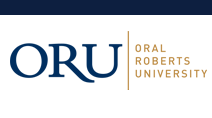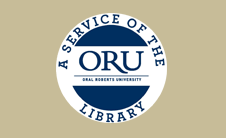Description
This paper asserts that Orthodox pneumatology makes possible for Pentecostal/Charismatics to recover the theanthropic structure in man.1 The authors posit that the theanthropic structure in man with its human and divine constituents were already resident in man when the first man, Adam was created in the “image of God” (Genesis 1:26). These human and divine constituents were also resident in Jesus Christ, the second Adam, who bore perfectly the imago dei (Rom 5:14). At salvation, believers recover the potential that was lost at the fall. They also begin to realize the imago dei, when God, through the Holy Spirit allows them to become partakers of divine nature (II Peter 1:4). The process through which the theanthropic constituents of the imago dei is realized is through what Orthodox pneumatology called theosis (deification). In theosis, the Holy Spirit enables the believer to become partakers of the divine nature without becoming God Himself. Consequently, believers will not only do the works of God through divine empowerment but will also be transformed to take on the nature of Christ, as being divine and human. Theosis as emphasised by Orthodox pneumatology is consistent with biblical exhortations that call for believers to be holy even as God is holy. The Orthodox are however careful to make the point that the difference between God’s nature and man’s remains.2 This paper begins with a discussion on Pentecostal/Charismatic spirituality, looking at its areas of emphasis and lack. This is followed by an analysis of imagodei and the process of theosis from Orthodox pneumatology. With that biblical and theological investigation, the paper will argue for a theanthropic structure in man. This will be followed by an integration of Orthodox pneumatology to Pentecostal/Charismatic spirituality with applications for Pentecostal/Charismatic churches.
“Orthodox Pneumatology for Pentecostal/Charismatic Spirituality with View of Recovering the Theanthropic Structure in Man”
This paper asserts that Orthodox pneumatology makes possible for Pentecostal/Charismatics to recover the theanthropic structure in man.1 The authors posit that the theanthropic structure in man with its human and divine constituents were already resident in man when the first man, Adam was created in the “image of God” (Genesis 1:26). These human and divine constituents were also resident in Jesus Christ, the second Adam, who bore perfectly the imago dei (Rom 5:14). At salvation, believers recover the potential that was lost at the fall. They also begin to realize the imago dei, when God, through the Holy Spirit allows them to become partakers of divine nature (II Peter 1:4). The process through which the theanthropic constituents of the imago dei is realized is through what Orthodox pneumatology called theosis (deification). In theosis, the Holy Spirit enables the believer to become partakers of the divine nature without becoming God Himself. Consequently, believers will not only do the works of God through divine empowerment but will also be transformed to take on the nature of Christ, as being divine and human. Theosis as emphasised by Orthodox pneumatology is consistent with biblical exhortations that call for believers to be holy even as God is holy. The Orthodox are however careful to make the point that the difference between God’s nature and man’s remains.2 This paper begins with a discussion on Pentecostal/Charismatic spirituality, looking at its areas of emphasis and lack. This is followed by an analysis of imagodei and the process of theosis from Orthodox pneumatology. With that biblical and theological investigation, the paper will argue for a theanthropic structure in man. This will be followed by an integration of Orthodox pneumatology to Pentecostal/Charismatic spirituality with applications for Pentecostal/Charismatic churches.





